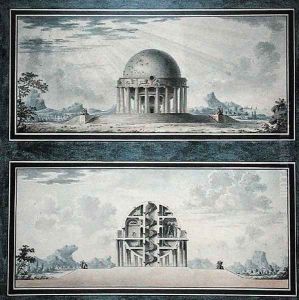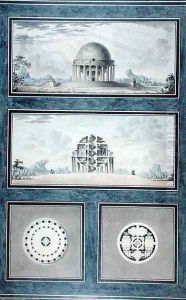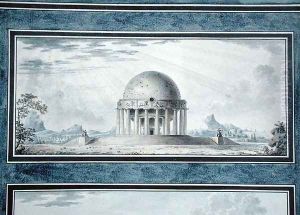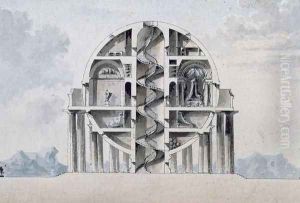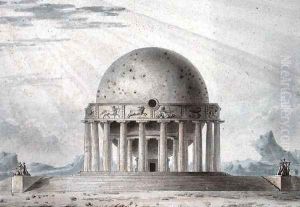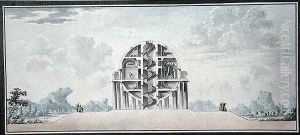Antoine Laurent Thomas Vaudoyer Paintings
Antoine Laurent Thomas Vaudoyer was a notable French architect, born in 1756 in Paris, France, and died in 1846. His career spanned a significant period in French architectural history, bridging the late Baroque and Neoclassical movements, and extending into the turbulent times of the French Revolution and the Napoleonic era. Vaudoyer was deeply influenced by the ideals of the Enlightenment, which emphasized reason, the scientific method, and progress, principles that he sought to incorporate into his architectural designs.
Vaudoyer was educated at the French Academy in Rome, an institution that played a pivotal role in shaping the architects of the time by exposing them to the ruins of antiquity and the Renaissance masterpieces. His education and experiences in Rome were fundamental to his development as an architect, embedding in him a profound appreciation for classical antiquity, which would be a consistent source of inspiration throughout his career.
Throughout his life, Vaudoyer was engaged in a wide range of projects, including public buildings, private residences, and urban planning. He was known for his ability to blend the grandeur and symmetry of classical architecture with the functional needs of modern society, a skill that made him a prominent figure in his field. Vaudoyer's contributions to architecture were not limited to his buildings; he was also a respected teacher at the École des Beaux-Arts in Paris, where he influenced a generation of architects with his ideas on architectural education and practice.
One of Vaudoyer's most significant contributions to architecture was his advocacy for the preservation of historical monuments. At a time when many were indifferent to the fate of France's architectural heritage, Vaudoyer was a vocal proponent of conservation efforts, arguing that historical buildings were not only aesthetically valuable but also essential to the nation's cultural identity. His efforts in this area helped lay the groundwork for the modern discipline of historic preservation in France.
Despite his achievements, Vaudoyer's work was sometimes overshadowed by that of his contemporaries, such as Jean-Nicolas-Louis Durand and Étienne-Louis Boullée, who were also defining the course of French architecture during the same period. Nonetheless, Vaudoyer's legacy as an architect and educator, as well as his contributions to the preservation of France's architectural heritage, have ensured his place in the annals of architectural history.
